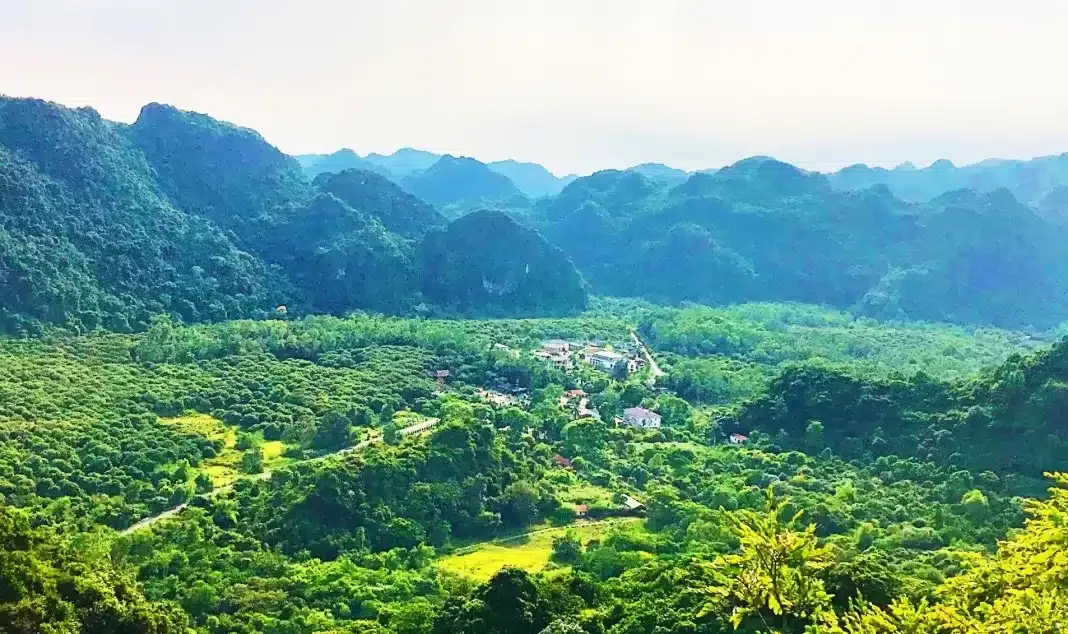Vietnam has achieved a significant milestone in its efforts to combat climate change, receiving a payment of over $51 million for verified emissions reductions, also known as carbon credits.
The payment is from the World Bank’s Forest Carbon Partnership Facility (FCPF). It is attributed to Vietnam’s successful initiatives in reducing deforestation and forest degradation (REDD) and enhancing carbon storage through reforestation and afforestation.
Rewarding Climate Action via Carbon Credits
Notably, Vietnam is the first country in the East Asia Pacific region to receive a results-based payment (RBP) from the FCPF.
Results-based payment is a dynamic strategy within the space of sustainable development. It is designed to incentivize climate action, foster the growth of carbon markets, and spur innovation.
Under this payment framework, investors provide financial compensation to an entity—be it a sovereign nation, a private enterprise, or a local community—to accomplish, document, and independently verify a set of performance objectives.
These objectives are typically linked to outcomes of climate change mitigation or adaptation efforts. They include activities such as cutting greenhouse gas emissions, deploying nature-based solutions, or responsibly managing natural resources.
The WB’s payment acknowledges Vietnam’s achievement in reducing 10.3 million tonnes of carbon emissions between February 2018, and December 2019. This marks the largest single payment for verified and high-integrity carbon credits made by the FCPF to date.
The benefits of the payment are extensive, reaching 70,055 forest owners and 1,356 neighboring communities. These benefits are allocated according to a robust benefit-sharing plan developed through a consultative, participatory, and transparent process.
Vietnam’s Emission Reductions Triumph Paves the Way to Net Zero
Vietnamese Minister of Agriculture and Rural Development, Le Minh Hoan, emphasized the significance of this achievement. He stated that:
“The success of this REDD programme brings Vietnam closer to delivering on our ambitious Nationally Determined Contributions under the Paris Agreement, while protecting areas of vital importance to biodiversity conservation.”
Furthermore, Vietnam has exceeded its emission reduction targets of 10.3 million stated in the Emission Reduction Payment Agreement. The Asian country achieved a total of 16.2 million tonnes of verified emission reductions. It can then sell the corresponding carbon credits to buyers via bilateral deals or carbon markets.
Vietnam can also decide to count the credits towards its Nationally Determined Contributions or retire them.
This success has prompted the World Bank to issue a call option notice to acquire an additional 1 million tonne emission reductions beyond the agreed contract volume.
Vietnam’s emission reduction program focuses on protecting its tropical forests, covering 3.1 million hectares of land. These forests are vital for biodiversity conservation, forming the backbone of internationally recognized conservation corridors and supporting various ethnic minority groups and forest-dependent communities.
In 2016, Vietnam’s net carbon sink capacity was 39 metric tonnes of CO2 equivalent (MtCO2e). The Southeast Asian nation pledged to achieve net zero emissions by 2050 during the COP26 World Leaders’ Summit in 2021.
The country’s National Climate Change Strategy underscores its determination to reach net zero, but dependent on international financial support. The strategy aims to:
- Reduce 70% of remaining emissions by 2030,
- Increase carbon absorption by 20%, and
- Achieve a total sink capacity of 95 MtCO2e.
On top of it all, maintaining 43% national forest coverage is crucial for reaching net zero emissions.
As per McKinsey & Company analysis, Vietnam can achieve 2050 net zero through a concerted decarbonization effort across all seven sectors. The country’s REDD+ program falls under LULUCF (land use, land-use change, and forestry) sector.
Through a multifaceted approach involving enhanced forest management practices, strategic investments in the forestry sector, and agricultural policy refinements, Vietnam’s program aims to expand both the coverage and quality of forested areas while engaging local communities.
Unlocking Climate Finance Potential
The Forest Carbon Partnership Facility is a global partnership aiming to reduce emissions from deforestation and forest degradation, conserve forest carbon stocks, and enhance forest carbon stocks in developing countries.
Launched in 2008, the FCPF has worked with 47 developing countries across Africa, Asia and Latin America, and the Caribbean. It has contributions and commitments totaling $1.3 billion from 17 donors.
The FCPF plays a pivotal role in supporting REDD+ efforts through its two distinct yet complementary funds.
- The FCPF Readiness Fund, operational from 2008 to 2022, has been instrumental in assisting developing countries in their preparations to engage in a comprehensive system of positive incentives for REDD+. Over its operational period, the Readiness Fund has disbursed a total of $472 million to support these critical readiness activities.
- In parallel, the FCPF Carbon Fund serves as a mechanism for piloting results-based payments to countries that have demonstrated tangible emission reductions in their forest and broader land-use sectors. With a current funding envelope of $900 million, this Fund incentivizes emission reductions and promotes sustainable forest management practices.
Together, these funds under the FCPF framework provide a comprehensive and flexible platform for supporting REDD+ initiatives across the globe. The FCPF is advancing the goals of REDD+ while fostering sustainable development and environmental stewardship in forested regions worldwide.
Vietnam’s success underscores the transformative potential of rewarding climate action, offering a blueprint for sustainable development and environmental stewardship.


